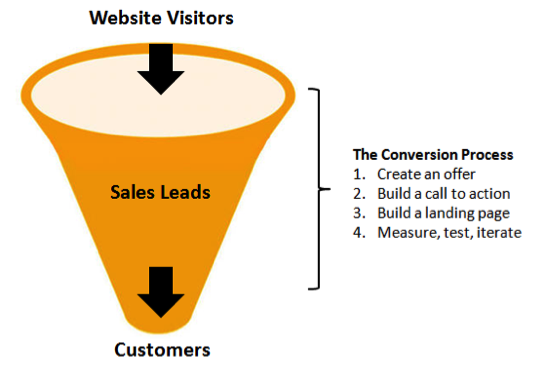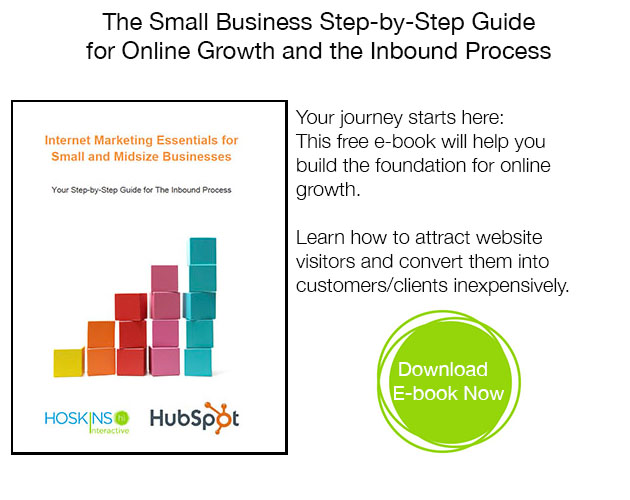Hoskins Interactive Media & Marketing Blog
Current Articles Rss FeedAre Website Visitors Buying What You Are Selling? How to Convert Leads
Posted bywpbizTue, Sep 17, 2013 @ 1:09 pm
What to do if you have website visitors, but the phone isn’t ringing and sales is a struggle? Focus on converting visitors into leads. These tips about the conversion process, part of HI’s Essential Step-by-Step Guide to Internet Marketing, get you on the right track.
Lead Conversion: Directing Website Traffic (Visitors) Through the Sales Funnel
If you’re actively blogging, optimizing your website, and participating/promoting content on social sites, website traffic should be on the rise. Keep this up! But you still need to tell people what to do—direct their path and state what they need. Your visitor only knows they are searching for answers, not necessarily which answer solves their problem.
A sense of urgency or intent has likely prompted a visit to your website. This is also called the buying cycle or customer lifecycle. In the theatre, we call this motivation. The visitor is either:
- Identifying that they have a problem.
- Considering possible solutions.
- Deciding to invest in a product or service.
The educational advice from your blog may may have brought visitors to your doorstep. But communicating value of your products/services…well, that’s a job for content offers, calls-to-action and landing pages.

The content offer is an e-book, guide, template, slide deck, research report, archived webinar, trials, demos, consultations—the possibilities are endless. The important part: the content is free. The visitor only needs to hand over an email address and any other critical contact information to receive it.
No doubt you’ve experienced how this works: you fill out a form and download a piece of content. Later, you’ll receive a series of helpful emails, which hopefully win your business over time. But the process starts with:
- Deciding what to offer. What information would encourage visitors toconsider you and buy?
- Creating calls-to-action (CTA). This is a button that directs visitors to a landing page. The goal is to entice, so your CTA should cite a benefit, what the visitor learns or gets, and directive, like download the content.
- Creating landing pages. This is the page visitors are taken to once they click the call-to-action button. Landing pages are islands: the only thing a visitor can do on this page is fill out the form to download the content. Visitors are captive to your message and benefit statements! The goal for them is to get free content. The goal for you is to get contact information.
When the keywords, message and benefit statements relate to a visitor’s motivation/what they are thinking (identify problem, consider solutions, decide to invest), then conversion is pretty seamless. But you always want to test the elements and compare results. Sometimes even adding an image or a different color font can make a difference in how many people complete the conversion process.
Always be testing!
To learn the other essential steps of Internet marketing for small businesses, download HI’s free e-book.
______________________________________________________________________________
Terra Hoskins wants to help small businesses grow—she’s experienced the power of inbound while managing marketing at a small company and seeks to share her knowledge as principal of inbound marketing agency, Hoskins Interactive. She tweets at @terrahoskins.
How to get started in Internet Marketing: related information on attracting traffic and converting leads:
- SEO & Inbound Links: Be an Authority Online; Attract Website Traffic
- 4 Ways Monitoring Social Media Helps You Get and Keep Customers
- How to Write a Good Blog: 6 Fast and Easy Steps for Small Businesses
* graphic courtesy of HubSpot

